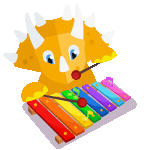Active vs. Passive Learning: What Works Best for Kids Learning French?
Not all learning activities yield the same results. Active learning where children engage, produce, and reflect—builds stronger language connections than passive intake alone. Yet, a balanced approach that includes both methods can maximize engagement and retention.
Why the Distinction Matters
Passive learning (listening to songs, watching videos, reading) provides vital input and exposure to pronunciation, rhythm, and vocabulary. Active learning (speaking, writing, games, projects) forces learners to retrieve, manipulate, and apply language, solidifying neural pathways.
Passive Learning: Nourishing the Ear and Eye
Kids absorb French naturally through storytime, songs, and cartoons. For example, playing a short animated clip in French helps them tune into native speech patterns. Reading illustrated books builds sight-word recognition. While passive activities develop comprehension, they often lack the production practice essential for confident speaking.
Active Learning: Speaking, Writing, and Doing
Active exercises prompt children to use French in meaningful ways: • Role-play a market scene, asking and answering questions: “Je voudrais un croissant.”
• Write a one-sentence journal entry: “Aujourd’hui, j’ai joué au parc.”
• Teach a sibling or plush toy a new word—explaining cements memory.
Active methods require effortful retrieval and provide feedback opportunities, so mistakes become teachable moments.
Blending Both for Optimal Progress
- Input + Output Loops – After watching a short French cartoon, pause and ask your child to recount the plot in French (forced output).
- Echo & Expand – Play a Dinolingo story lesson, have kids echo lines (passive to active), then create their own next sentence.
- Project-Based Learning – Combine reading an illustrated recipe with cooking dialogue practice: read (passive), then role-play the chef-client exchange (active).
Dinolingo’s Role in Balancing Modes
Dinolingo’s interactive features seamlessly blend passive and active learning. Bite-sized videos and songs build listening comprehension, while mic-based quizzes, drag-and-drop activities, and live pronunciation meters turn input into output. Progress is tracked on the Parent Dashboard, highlighting both exposure time and production scores.
Quick Weekly Plan (20–30 min/day)
Monday: Story video + echo practice
Tuesday: Vocabulary song + flashcard quiz
Wednesday: Dinolingo interactive lesson + role-play
Thursday: Reading + journal entry
Friday: Game-based review + badge celebration
Weekend Bonus: Family shadowing walk—listen to a French podcast and shadow key phrases while walking.
Final Thoughts
Active learning cements language through use, while passive learning supplies the essential input. By weaving both into short daily routines—and leveraging French lessons that integrate games, stories, and pronunciation checks—you ensure your child’s French journey is both effective and fun.
Sources
Start Learning a New Language Today!
Best Language App for Kids.
7-day free trial. Then only $19/month. Cancel anytime.
